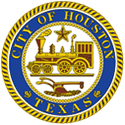 > Opportunity Zones > What Are Opportunity Zones?
> Opportunity Zones > What Are Opportunity Zones?
Opportunity Zones
What Are Opportunity Zones?
Opportunity Zones are census tracts generally composed of economically distressed communities that qualify for a community development program called the Opportunity Zone program, which was created under the Tax Cuts and Jobs Act of 2017. Under this program, low-income census tracts are nominated by state governors and the mayor of the District of Columbia and certified by the US Department of the Treasury as qualified Opportunity Zones targeted for economic development. There are more than 8,700 qualified Opportunity Zones in the US.
Federal Criteria for Opportunity Zones
To qualify for nomination as an Opportunity Zone, a census tract must meet the following low-income requirements:
01: A poverty rate of at least 20%; or
02: A median family income of:
- No more than 80% of the statewide median family income for census tracts within non-metropolitan areas.
- No more than 80% of the greater statewide median family income or the overall metropolitan median family income for census tracts within metropolitan areas.
03: Up to 25% of the census tracts of each jurisdiction that met these criteria could be nominated. An additional 5% of each jurisdiction could qualify if they met a different set of income and geographic qualifications:
- A census tract that’s contiguous with a low-income Opportunity Zone; and
- A median family income of no more 125% of the median family income.
Learn More About Opportunity Zone Regulations
First tranche of regulations released
https://www.irs.gov/pub/irs-drop/reg-115420-18.pdf
Second tranche of regulations released
https://www.federalregister.gov/documents/2019/05/01/2019-08075/investing-in-qualified-opportunity-funds
Video of First White House Briefing
https://www.youtube.com/watch?v=XINm8kfY5w4
Contact Information
For more information please contact us.
